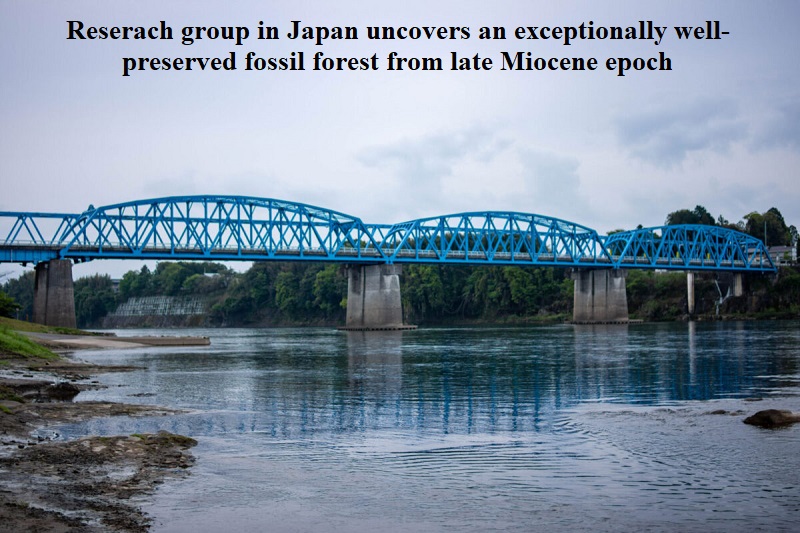
A research group in Japan has made an extraordinary discovery of a remarkably well-preserved fossil forest, providing potential insight into reconstructing a “whole Eurasia plant from the late Miocene epoch,” a period that existed around 10.4 to 5 million years ago.
The fossilized forest is identified as belonging to the Wataria parvipora species, as revealed in a press release from Hokkaido University, where Professor Toshihiro Yamada from the Department of Earth and Planetary Sciences led the study.
The Wataria parvipora is distinguished by its unique growth rings, abundant parenchyma rays, and absence of resin canals. The research team found that the stumps of this species accounted for 95 percent of the tree remains, indicating that the forest was predominantly composed of Wataria parvipora.
The fossilized forest was first uncovered during a severe drought in 1994 when approximately 450 tree stumps emerged from the water. Although most of the stumps were subsequently submerged again, scientists had the opportunity to examine 137 of them, along with the surrounding leaves.
It is crucial to understand that finding complete plant fossils in one piece is exceedingly rare. Normally, plant fossils are fragmented, with different parts having separate scientific names. Reconstructing the entire plant is akin to solving a complex jigsaw puzzle and is vital to establishing their taxonomic identity in the Tree of Life.
According to the findings published in the journal Scientific Reports, the majority of the surrounding leaves belonged to Byttneriophyllum tiliifolium, a leaf-fossil species associated with the Malvaceae or mallow family. This species has similarities to modern plants such as cotton, cacao, and okra. Byttneriophyllum fossils have been found across Eurasia, dating back to the Miocene and Pliocene epochs.
The researchers noted that an astounding 98 percent of the fossil leaves at the site belonged to Byttneriophyllum, strongly suggesting that they were shed from the parent trees of the Wataria parvipora forest.
This well-preserved fossil forest provides a unique opportunity for scientists to understand the missing links and reconstruct a comprehensive picture of the plant life that existed during the late Miocene epoch. By studying these ancient remains, researchers can gain valuable insights into the flora of that time period and its place in the evolutionary history of plant life in Eurasia.

Post Your Comments